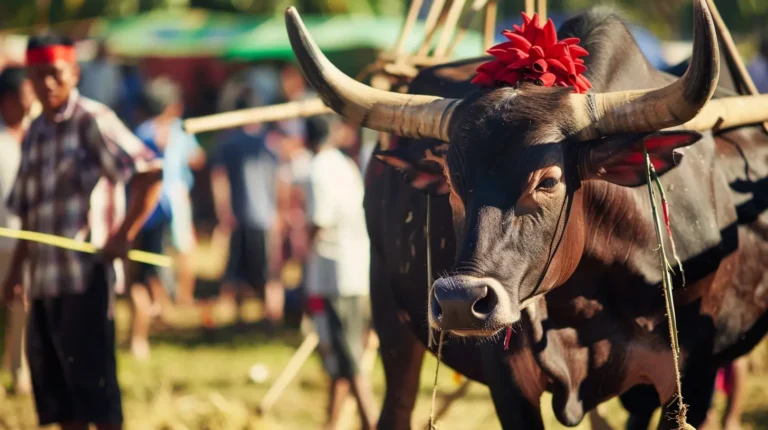Introduction
June is a magical time of the year when the weather is warm, the days are long, and celebrations are aplenty. Whether you’re looking to join in local festivities, explore unique cultural events, or simply take a break from your routine, June 2024 offers a plethora of opportunities for memorable experiences. In this blog post, we will explore the highlights of holiday in June 2024, showcasing a range of unique celebrations around the world.
June 2024: A Month of Unique Celebrations
June is brimming with diverse holidays and events. From vibrant cultural festivals to solemn commemorations, there’s something for everyone. Let’s delve into some of the most notable celebrations.
Midsummer (Sweden)
Midsummer, celebrated around the summer solstice, is one of Sweden’s most beloved holidays. The festivities include dancing around the maypole, singing traditional songs, and enjoying a feast of pickled herring, new potatoes, and strawberries. The celebrations usually start on a Friday and extend throughout the weekend.
Midsummer is deeply rooted in Swedish culture and is second only to Christmas in importance. The celebration typically begins with the raising of the maypole, a tall wooden pole adorned with flowers and leaves. Families and friends gather in the countryside, often near lakes or in open fields, to participate in the festivities. Traditional folk music fills the air as people dance around the maypole in traditional costumes. The menu for Midsummer is also a highlight, featuring a smorgasbord of Swedish delicacies, including gravlax (cured salmon), Janssons frestelse (potato casserole), and plenty of aquavit, a Scandinavian spirit.
Dragon Boat Festival (China)
The Dragon Boat Festival, also known as Duanwu Festival, is a traditional Chinese holiday with over 2,000 years of history. It features dragon boat races, eating zongzi (sticky rice dumplings), and drinking realgar wine. This vibrant festival commemorates the ancient poet Qu Yuan and is a spectacle of Chinese culture.
Held on the 5th day of the 5th month of the lunar calendar, the Dragon Boat Festival is marked by the exciting spectacle of dragon boat racing. Long, narrow boats adorned with dragon heads and tails race in rivers and lakes across China. Teams of rowers paddle in unison to the beat of a drum, creating a thrilling and competitive atmosphere. The festival also involves the preparation and consumption of zongzi, triangular sticky rice dumplings wrapped in bamboo leaves, filled with sweet or savory ingredients. The tradition of drinking realgar wine, believed to ward off evil spirits and diseases, is another integral part of the celebration.
Flag Day (USA)
Flag Day in the United States, observed on June 14th, commemorates the adoption of the American flag. Communities celebrate with parades, ceremonies, and educational activities about the flag’s history and significance. It’s a patriotic holiday that instills national pride.
Flag Day is an opportunity for Americans to reflect on the symbolism of the Stars and Stripes and to honor the nation’s history. Local communities often organize parades featuring marching bands, veterans’ groups, and scout troops. Schools and civic organizations hold educational programs to teach the history and proper etiquette of displaying the flag. Many Americans display the flag outside their homes and businesses. The day is also marked by speeches and ceremonies that emphasize the values of freedom, justice, and unity that the flag represents.
Kwanzaa: A Celebration of African Heritage
Kwanzaa, though traditionally celebrated from December 26 to January 1, sees a surge in cultural events and preparatory activities in June. This celebration of African heritage and culture involves ceremonies with music, dance, poetry, and narratives that celebrate unity, family, and community.
During June, many African American communities in the United States begin preparations for Kwanzaa by organizing cultural workshops, art exhibits, and educational programs. These activities aim to promote awareness and appreciation of African heritage and history. The seven principles of Kwanzaa—unity, self-determination, collective work and responsibility, cooperative economics, purpose, creativity, and faith—are discussed and celebrated through various events. The June activities serve as a prelude to the main Kwanzaa celebration, helping to strengthen community bonds and cultural pride.
Portugal Day
Portugal Day, celebrated on June 10th, honors the death of national literary icon Luís de Camões. Festivities take place across the country with parades, concerts, and fireworks. The President of Portugal often gives a national address, and various cultural events are held.
The day is marked by numerous cultural and patriotic events. In Lisbon, the capital city, the celebrations are particularly grand, with a military parade and an official ceremony attended by government officials and dignitaries. Across Portugal, local communities organize concerts featuring traditional fado music, literary readings, and theatrical performances. The day is also an occasion for Portuguese expatriates to celebrate their heritage, with events held in Portuguese communities around the world. Fireworks displays illuminate the night sky, adding a festive atmosphere to the national holiday.
Inti Raymi (Peru)
Inti Raymi, the Festival of the Sun, is an ancient Incan celebration held on June 24th in Cusco, Peru. The festival honors Inti, the sun god, and involves colorful processions, traditional music, and elaborate reenactments of Incan rituals. It is one of Peru’s most significant cultural events.
Inti Raymi is a spectacular event that attracts thousands of visitors to Cusco each year. The festivities begin with a grand procession from the Qorikancha temple, once the richest temple of the Inca Empire, to the Sacsayhuamán fortress. Participants dressed in elaborate costumes representing Incan royalty, priests, and warriors perform rituals and ceremonies to honor the sun god Inti. Traditional music and dance fill the air as the reenactments bring to life the grandeur of the Inca civilization. The festival also features a symbolic sacrifice of a llama, a ritual that was historically believed to ensure a bountiful harvest and prosperity for the community.
Holi Festival (India)
Holi, known as the Festival of Colors, is usually celebrated in March, but in some regions, festivities continue into June. This joyous festival involves throwing colored powders, dancing, and feasting, symbolizing the victory of good over evil and the arrival of spring.
In parts of India, especially in regions with cooler climates or among Indian communities abroad, extended celebrations of Holi occur in June. The festival begins with Holika Dahan, a bonfire night symbolizing the burning away of evil. The following day, known as Rangwali Holi, is marked by exuberant play with colored powders and water. Streets and public spaces transform into vibrant canvases as people of all ages join in the festivities. Traditional music, dance, and food are integral parts of the celebration. Special dishes like gujiya (sweet dumplings), thandai (a spiced milk drink), and various regional delicacies are prepared and enjoyed.
Festa Junina (Brazil)
Festa Junina, or June Festival, is a traditional Brazilian celebration with roots in Portuguese culture. It features bonfires, folk dances, music, and typical foods like canjica and paçoca. The festival honors St. John the Baptist and is celebrated throughout June, especially in rural areas.
Festa Junina is celebrated across Brazil, with each region adding its unique flavor to the festivities. In the northeast, where the festival is particularly vibrant, towns and cities are adorned with colorful flags and lanterns. Bonfires are lit in public squares, and people dress in traditional rural attire, with men wearing straw hats and women donning floral dresses. Quadrilha, a type of folk dance, is performed to the rhythm of forró music. The festival also includes mock weddings, where participants humorously enact a traditional countryside wedding. The culinary delights of Festa Junina are a highlight, featuring dishes like milho verde (green corn), pamonha (corn paste wrapped in corn husks), and various sweets made from peanuts and coconut.
Holidays in June: A Global Exploration
June is a month of diverse holidays worldwide, each offering unique cultural experiences. Here are some more noteworthy celebrations:
Queen’s Birthday (Australia)
The Queen’s Birthday is celebrated on the second Monday of June in most Australian states. This public holiday features parades, fireworks, and various community events. It’s a day to honor the reigning monarch and enjoy a long weekend.
In Australia, the Queen’s Birthday is marked by a range of activities and events. In major cities like Sydney and Melbourne, parades and public ceremonies are held, often attended by government officials and members of the royal family. The holiday is also an occasion for sports enthusiasts, with the Australian Football League (AFL) and National Rugby League (NRL) scheduling special matches. Fireworks displays light up the night sky, adding to the celebratory atmosphere. For many Australians, the long weekend provides an opportunity to spend time with family and friends, enjoying picnics, barbecues, and outdoor activities.
Rath Yatra (India)
Rath Yatra, the Festival of Chariots, is a major Hindu festival held in Puri, Odisha. Celebrated in June or July, it involves the grand procession of Lord Jagannath, Lord Balabhadra, and Devi Subhadra in massive chariots. Millions of devotees gather to participate in this vibrant event.
Rath Yatra is one of the most significant and eagerly awaited festivals in India. The highlight of the festival is the procession of the three deities on elaborately decorated chariots, pulled by thousands of devotees through the streets of Puri. The journey from the Jagannath Temple to the Gundicha Temple, a distance of about 3 kilometers, is marked by chanting, singing, and dancing. The festival symbolizes Lord Jagannath’s annual visit to his birthplace and is believed to grant salvation to those who participate or even witness the event. The atmosphere is charged with spiritual fervor and joy, as devotees from all over the world come together to celebrate their faith.
Father’s Day
Father’s Day, celebrated on the third Sunday of June in many countries, honors fathers and father figures. It’s a day filled with family gatherings, gifts, and special activities to show appreciation for dads.
Father’s Day is a special occasion to recognize and celebrate the contributions of fathers to their families and society. In the United States, Canada, and other countries where it is widely observed, families often start the day with breakfast in bed for the father, followed by giving cards, gifts, and planning activities that dads enjoy. Many families organize outings such as picnics, hiking trips, or sporting events. Restaurants and cafes often offer special menus for the day, making it a popular time for family dining. The day provides an opportunity for children and spouses to express their gratitude and love for the paternal figures in their lives.
St. Jean Baptiste Day (Canada)
St. Jean Baptiste Day, celebrated on June 24th, is a significant holiday in the province of Quebec, Canada. The festivities include parades, concerts, and fireworks, highlighting Quebec’s unique culture and heritage.
St. Jean Baptiste Day, also known as La Fête Nationale, is a vibrant expression of Quebecois identity and pride. The celebrations date back to the early 19th century and have evolved into a grand cultural festival. In Montreal, the streets come alive with parades featuring floats, marching bands, and performances by local artists. Concerts showcasing Quebec’s rich musical heritage are held throughout the day and into the night, culminating in spectacular fireworks displays. In smaller towns and villages, community gatherings, traditional dances, and bonfires are common. The day is a joyous occasion for Quebecois to celebrate their language, culture, and traditions.
Juneteenth (USA)
Juneteenth, celebrated on June 19th, commemorates the emancipation of enslaved African Americans in the United States. It is a day of reflection, education, and celebration with parades, music, and cultural events.
Juneteenth, also known as Freedom Day, marks the anniversary of General Gordon Granger’s announcement in Texas on June 19, 1865, that all enslaved people were free. The day has grown in significance, becoming a time for African Americans to honor their heritage and history. Celebrations often include parades, historical reenactments, and educational programs highlighting the achievements and contributions of African Americans. Music and dance are integral parts of Juneteenth, with performances ranging from traditional African drumming to contemporary hip-hop and R&B. Barbecues, family reunions, and community festivals are common, fostering a spirit of unity and pride.
Carabao Festival (Philippines)
The Carabao Festival, held in June in Pulilan, Bulacan, honors the water buffalo. The animals are decorated and paraded through the town, followed by traditional dances and celebrations.
The Carabao Festival is a colorful and lively event that pays tribute to the carabao, a symbol of strength and resilience in Filipino culture. In Pulilan, the festival begins with a parade of carabaos, beautifully adorned with flowers, paint, and accessories, pulling carts and floats. The animals are blessed by the town’s parish priest in a special ceremony. The parade is followed by traditional dances and performances showcasing the rich cultural heritage of the region. The festival also includes agricultural fairs, where local farmers display their produce and participate in competitions. It is a celebration of gratitude for the carabao’s role in farming and rural life.
Festivals and Events: June’s Cultural Mosaic
The cultural richness of June is unmatched, with festivals and events that reflect the heritage and traditions of various communities. Here’s a closer look at some more unique celebrations:
Bloomsday (Ireland)
Bloomsday, celebrated on June 16th, honors the life and work of Irish writer James Joyce. Fans of Joyce participate in readings, performances, and visits to significant locations from his novel Ulysses.
In Dublin, the birthplace of James Joyce, Bloomsday is a literary festival like no other. Devotees of Joyce dress in Edwardian attire and follow the footsteps of Leopold Bloom, the protagonist of Ulysses, visiting locations mentioned in the novel. The day is filled with readings and reenactments of scenes from the book, bringing Joyce’s work to life. Literary discussions, walking tours, and theatrical performances are also part of the festivities. Cafes and pubs serve dishes mentioned in Ulysses, adding a culinary dimension to the celebration. Bloomsday is a unique blend of literature, history, and performance art, drawing Joyce enthusiasts from around the world.
Corpus Christi (Worldwide)
Corpus Christi, a Christian feast, is observed in many countries with processions and masses. Celebrated on the Thursday after Trinity Sunday, it honors the Eucharist and features elaborate street decorations and community events.
Corpus Christi is a significant feast in the Christian liturgical calendar, celebrating the real presence of the body and blood of Jesus Christ in the Eucharist. In Spain, Portugal, Mexico, and other countries, the day is marked by grand processions through the streets, with participants carrying religious icons and symbols. The streets are often decorated with flowers, creating intricate floral carpets that enhance the beauty of the procession. In some regions, Corpus Christi is also an occasion for community festivals, with music, dancing, and feasting. The solemnity of the religious observances is complemented by the joy and festivity of the communal celebrations.
Jani (Latvia)
Jani, the Latvian midsummer festival, takes place on June 23rd and 24th. It involves singing, dancing, and jumping over bonfires. Traditional foods include cheese and beer, and the celebration marks the summer solstice.
Jani is one of Latvia’s most cherished holidays, celebrating the arrival of summer and the longest day of the year. The festivities begin on the evening of June 23rd, known as Ligo night, and continue until the morning of June 24th. People gather in the countryside, often near lakes and forests, to participate in the celebrations. Traditional songs and dances are performed around large bonfires, and it is customary to jump over the bonfire to ensure good luck and prosperity. Special foods, such as Jani cheese flavored with caraway seeds and freshly brewed beer, are enjoyed. The festival also includes making and wearing flower wreaths, symbolizing the connection to nature and the renewal of life.
Gawai Dayak (Malaysia)
Gawai Dayak is a harvest festival celebrated in Sarawak, Malaysia, on June 1st and 2nd. It includes traditional music, dance, and feasting, honoring the spirits and celebrating the year’s harvest.
Gawai Dayak is a major cultural event for the indigenous Dayak people of Sarawak. The festival begins with the offering of food and drink to the spirits, followed by communal feasting and merrymaking. Traditional music, played on instruments such as the sape (a stringed instrument), and dances like the ngajat, are performed. The ngajat dance, characterized by its graceful and intricate movements, tells stories of bravery and the natural world. Longhouses, the traditional dwellings of the Dayak people, are decorated, and open houses are held, where visitors are welcomed to join the celebrations. The festival also includes beauty pageants, traditional games, and the brewing and sharing of tuak, a rice wine.
Vivid Sydney (Australia)
Vivid Sydney, although primarily a May festival, extends into June. It is a spectacular festival of light, music, and ideas, transforming Sydney into a vibrant canvas of color and creativity.
Vivid Sydney is one of the world’s most renowned festivals of light and innovation. Iconic landmarks like the Sydney Opera House and the Harbour Bridge are transformed into stunning light installations, with artists and designers creating immersive and interactive displays. The festival also features live music performances, with a lineup of international and local artists performing across various venues in the city. Vivid Ideas, a series of talks and workshops, explores topics ranging from creative industries to technology and innovation. Visitors can also enjoy pop-up food stalls, street performances, and art exhibitions, making Vivid Sydney a comprehensive cultural experience.
FAQs
- What are some unique holidays in June 2024?
June 2024 features unique holidays such as Midsummer in Sweden, the Dragon Boat Festival in China, and Inti Raymi in Peru. Each of these celebrations offers a unique cultural experience. - How is Flag Day celebrated in the USA?
Flag Day in the USA is celebrated with parades, ceremonies, and educational activities about the American flag. It instills national pride and commemorates the adoption of the flag. - What is Inti Raymi?
Inti Raymi is an ancient Incan festival held in Cusco, Peru, on June 24th. It honors Inti, the sun god, with colorful processions, traditional music, and reenactments of Incan rituals. - When is Portugal Day celebrated?
Portugal Day is celebrated on June 10th. It honors the death of national literary icon Luís de Camões with parades, concerts, fireworks, and various cultural events. - What is the Dragon Boat Festival?
The Dragon Boat Festival, also known as Duanwu Festival, is a traditional Chinese holiday featuring dragon boat races, eating zongzi, and drinking realgar wine. It commemorates the ancient poet Qu Yuan. - How is Midsummer celebrated in Sweden?
Midsummer in Sweden is celebrated with dancing around the maypole, singing traditional songs, and enjoying a feast of pickled herring, new potatoes, and strawberries.
Conclusion
June 2024 is packed with unique and diverse celebrations that offer a glimpse into different cultures and traditions around the world. Whether you’re exploring local festivals or participating in international holidays, there’s no shortage of exciting events to experience. From the vibrant Midsummer in Sweden to the colorful Inti Raymi in Peru, June is truly a month of cultural richness and festive joy.








